One of the biggest shocks of last week’s UK Strategic Defence & Security Review (SDSR) was the cancellation of the BAE Systems Nimrod MRA4 project. But what are the options now for RAF maritime patrol and ASW capability?
Reportedly the decision came as a surprise even to senior officials – prompting rumours that the aircraft had been sacrificed to show commitment to a significant large-scale cut, rather than yet more ‘salami-slicing’. Although with only nine aircraft to have been delivered, down from the original 21 ordered, it is unclear how much more the project could have been realistically reduced in size any further.
Whatever the history of this £3.5bn project, it was to have provided the UK with a highly capable maritime patrol aircraft (MPA) as well as a Combat-ISTAR (intelligence, surveillance target acquisition and reconnaissance) platform and support to the nuclear deterrent. There is also the counter-terrorism mission – both overland and at sea. Indeed – it could be argued that for a rogue state or terror group more likely (and deniable) way of delivering a nuclear weapon or other WMD would be via container ship than long-range missile. The Nimrod also provides long-range SAR cover, co-ordinating rescues far out at sea.
At the moment with the Nimrod MR2 retired earlier this year at the end of March, the SAR mission is being undertaken by helicopters, coast guard aircraft, a RAF C-130 (no surface search radar and Mark 1 eyeball) designated on to be standby for long-range SAR and friendly allies.
Lacking a dedicated long-range MPA asset – this is an unprecedented situation for the UK to be in – especially as an island nation reliant on the sea. So does this mean the capability will be gone for good? Or is this just a capability holiday, gap or hibernation?
If we assume that this mission is important, and that future Governments may want to reconstitute it when economic conditions improve – what then might be the options for a reborn RAF MPA fleet in a post-SDSR, post-Nimrod world?
1) Boeing P-8 Poseidon
One high-end option might be the Boeing P-8 Poseidon – now ordered by the US Navy and also as the P-8I by India. Though the P-8 would undoubtedly be expensive – it would offer savings by being based on a commercial, in-service airframe, the ubiquitous 737-800. The RAF would also be able to tap into the US Navy’s support, training and maintenance infrastructure – lowering operating costs. With over 108 aircraft to be procured by the US Navy, (along with 12 P-8Is for India) there would be substantial economies of scale. Finally, another advantage it would offer is that the Boeing mission system is almost identical to the MRA4 – giving some continuity to any MRA4 aircrew who might have already trained up and still be in the RAF by the time a P-8 was introduced into service.
2) Airbus Military A320MPA?
A European solution might be an Airbus Military A319/A320-based MPA – which Airbus/EADS has already proposed to India. However, while Airbus Military has converted A310s and A330s into tanker-transports the A319/A320MPA would represent the first time an A320 family had been converted to a military type. Starting from scratch again would thus mean increased risk and a longer development timeframe. However, an A320MPA could offer an attractive joint procurement for other European countries with MPAs, such as France, which is still operating the aging Bréguet Atlantique in this role.
3) Lockheed Martin P-3 Orion
A cheaper solution then, might be a refurbished and rewinged Lockheed Martin P-3 Orion. Lockheed is already involved in a rewinging programme for these aircraft, and in 2018 there will still be some 400+ aircraft in service with air arms and navies around the world. It is not without precedent too - the German Navy recently retired its Atlantique MPAs in favour of refurbished, updated ex-Dutch P-3C CUPs. An Orion solution then would give the RAF a four-engined dedicated MPA used by a number of allies.
4) Airbus Military C235/C-295MPA
If the SDSR really does represent a turning point in the UK’s fortunes, from a global player to an offshore island concerned mainly with its own immediate territory – another highly affordable choice might be the Airbus Military C235/C295 twin-engined turboprops. These aircraft in the MPA role are operated by a number of nations, including Mexico, Chile, Portugal and in US Coast Guard service as the HC-144A Ocean Sentry.
5) Wildcards - Global Hawk/XP-1
Finally in terms of completeness there are also a couple of wildcards that are worth including. The first is a Northrop Grumman Global Hawk or other UAV (eg EADS Talarion) for the above water surveillance mission. The US Navy has already selected the MQ-4C Global Hawk for its BAMS (Broad Area Maritime Surveillance) requirement, and with its outstanding persistence and sensors it would be able to cover long range patrols. However, lacking MAD, sonobuoys and a rear mission crew any UAV solution would have to rely on another platform to perform the ASW mission. With the RAF still keeping its Scavenger UAV ISTAR requirement – could a MPA/BAMS type capability be shoehorned into this?
A second wildcard might be another MPA now being developed by another Island nation – the Kawasaki XP-1 in Japan. A four-engined aircraft equipped with turbofans, the XP-1 (formerly P-X) patrol aircraft will replace the 80 P-3 Orions in Japanese Maritime Self-Defense Force (JMSDF) service. However, Japan is currently restricted from exporting defence technology - which makes this concept a long-shot indeed. Tokyo, though, has recently been reported to be making moves to relax these rules to allow export of weapons so the idea is perhaps not entirely improbable. Far-fetched, but could a Japanese decision to acquire Eurofighters as its next-gen fighter, also result in the UK buying P-Xs in return?
Summary
Of course – it may be that option 6 – ‘do nothing’ is the preferred option and that the UK’s maritime patrol aircraft capability – so vital with Coastal Command and the Battle of the Atlantic is allowed to die. Co-operation with NATO and EU allies would mean that role specialisation of MPA would be left to someone else – an odd choice for an island nation. Indeed, it has already been reported that France has offered to support the UK with its Bréguet Atlantique fleet ahead of a new Anglo-French defence entente – driven not by a strategic rapprochement but by hard fiscal realities for both nations. However in these new austerity times it may be that the MPA mission, once given up, is never reconstituted – and the longer the capability ‘holiday’, the more likely this is – for as any future Treasury might argue: “well - you seem to have coped alright without it.”
To read ‘Five priorities for the post-SDSR environment’ see November’s issue of Aerospace International magazine - the publication for aerospace professionals - out on 1st November.
For a full in-depth analysis of the SDSR and its operational, technological and industrial implications, from Professor Keith Hayward, Head of Research, RAeS, and Air Cdre (Ret’d) Dr Peter Gray, Senior Research Fellow in Air Power Studies, University of Birmingham, look out for the December edition of Aerospace International.
from the Royal Aeronautical Society



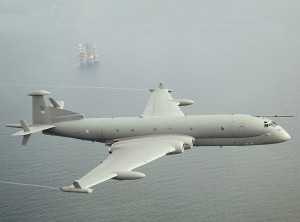
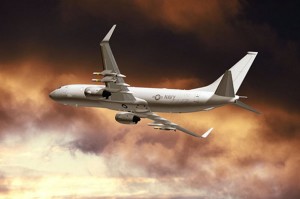
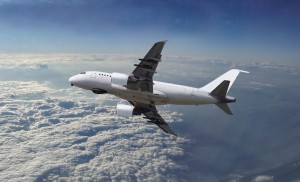
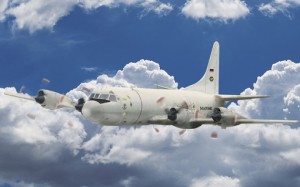
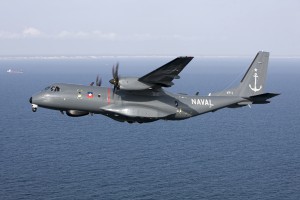
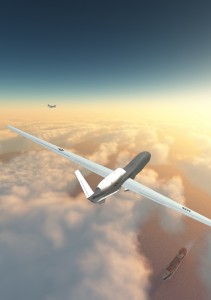
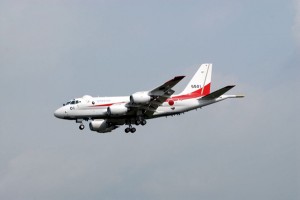


Sir,
A good article. I copy below a recent open letter sent to the PM, which you may like to publish. Thank you,
Andy Trotman.
Cancellation of Nimrod MRA4 – An Open Letter to the Prime Minister
Dear Mr Cameron,
I apologise for the open nature of this letter, but time is of the essence and the subject too important to allow for the luxury of private correspondence.
I refer to the cancellation of Nimrod MRA4 and the closure of Royal Air Force Kinloss to flying operations. The effect of this decision on local jobs, businesses and on the economy of Moray has been well aired, and rightly so. Of even greater concern to me and my family (despite the probable loss of my own job) is the effect this decision will have on the security and well being of the United Kingdom.
We are an island nation with the sea lanes still our main source of supply and trade. We are a nation active in world politics with ambitions for the future, and a long history which has not endeared us to all members of a very mobile world population. In these days of international terrorism, drug running and our reliance on an underwater nuclear deterrent, it is utter folly to end our maritime patrol aircraft (MPA) capability.
We must have an airborne capability, even in these times of financial restraint. The need for long range reconnaissance, anti-submarine operations and a search and rescue capability has barely diminished, and the need for electronic and optical surveillance and intelligence gathering has increased to meet modern threats.
Why on earth then, have we cancelled Nimrod MRA4? Being late and over budget does not equate to being no good, and to summarily cancel without reference to current capability and future potential is unacceptable. MRA4 is a platform with 15 hours unrefueled flight duration, a 2,000 plus mile radius of action, 13 weapon hard points, radar range of 250 miles, is search and rescue capable, has advanced communications, superior electro-optics for surface intelligence gathering and has very capable underwater detection systems. All integrated, working and demonstrated – AND ALREADY PAID FOR. At Royal Air Force Kinloss the training and support infrastructure is already in place and to disband such established facilities that support a very capable MPA is unforgiveable.
Unless this decision is reversed, people will die – as a result of unresolved search and rescue incidents, undetected drug and terrorist imports and missed intelligence. Our nuclear deterrent will be less secure and possibly rendered useless putting our whole nation at risk.
Mr Cameron, please hear these points from someone who has over 30 years military experience both within industry and the RAF. I have 5,000 flying hours as both Navigator and Pilot plus 5,000 hours of instructional experience in the Nimrod flight simulator. Approaching retirement, I have no axe to grind other than the well being of future generations, and of my country.
You say we cannot afford a maritime patrol aircraft capability. Prime Minister, the Nation cannot afford to be without.
Yours sincerely,
Andy Trotman.
*****************DETAILS REMOVED*************
Interesting thoughts, but unfortunately I believe that the MPA capability of the RAF will be gone forever. We saw the same thing happening to the Dutch P-3 fleet and RNLNAS Valkenburg. And The Netherlands too are considered to be a nation reliant on the sea. It’s relatively “cheap” to continue having an MPA capability but once a nation gave it up it won’t come back forever. Investments to set up a fleet of MPA’s with trained crews are way too high. It’s sad to see a second NATO member giving up its entire MPA capability…
Marco P.J. Borst
P-3 Orion Research Group
P.S.: German P-3s are not EADS-refurbished and updated. The P-3C CUP updates were done by Lockheed Martin and paid for by the Dutch before handing over the birds to Germany and Portugal.
Dear Marco - many thanks for the CUP fact correction - have amended the blog.
To withdraw the Nimrod MR2P fleet instantly, leaving no adequate air cover for the UK’s nuclear submarine fleet was bad enough, but to also chop the brand new MRA4s just at the point where they were close to entering service, and after a vast amount of taxpayers’ money has already been spent on developing this potent machine, is irresponsible beyond belief. As ever, defence is the easiest sector to cut in our bloated public sector, but it is our Services who will be expected to bail out the government in future unexpected national emergencies - only next time, after three decades of continuous reductions, the RAF will have only token assets available, so the outcome will be anyone’s guess. What a way to manage our national defence! Vague assurances from the government that after 2015 things should get better, may have kept the lid on hostile Service reaction in the short term, but all evidence suggests that once major capabilities are abandoned, such as MR operations and VSTOL experience, it will never return - the costs of restoring it and replacing “lost” skill levels will be too great. Looked at from every angle, this latest SDSR is the most hurredly cobbled together, self-mutilating disaster of defence “planning” that could be envisaged.
At the end of the day the so-called savings from these cuts will vanish when the full extent of the economic and social spin-off is taken into account. Thousands of highly skilled jobs in the Services and the supporting civilian infrastructure will cascade lost opportunities right down the supply chain to the guy who runs a car showroom next to an air base.The Nimrod debacle is a very visible symbol of an unfolding tragedy that we will live to regret in the coming years.
UK does need some Maritime Patrol capability and there is a further, lower cost and more practical option. While the C130 has been already tasked with providing a very limited short term capability based on no sensors, it is entirely feasible to modify the C130 such that a significant part of the developed and paid for MRA4 sensor / communications / command suite could be fitted as a ‘quick change’ role fit, including most of the operator stations, the search radar, sonarbouys / processing, ESM / Elint, E/O, extended comms, et al. Many of the required aircraft modifications have already been implemented for other applications. Although the C130 cannot match the endurance range and weapons capability of the MRA4, even without resorting to Air to Air refuelling the C130 can provide very impressive range and endurance, and the indications are that role change could be kept to a matter of a handful of days once basic provisions (for but not with) had been introduced. Most of the alternatives considered above would require UK to invest in new platforms infrastructure training and support, but C130 is already well established in the inventory and a role change mod salvaging the MRA4 investment would not be a high cost for restoring at least some level of Maritime Patrol capability.
Whilst the loss of the Nimrod MR2 Fleet sees a major reduction in capability for the RAF and is a tragedy for the Kinloss community; let us not forget that Royal Navy provides ASW cover for the UKs Nuclear deterrent with its Merlin Mk1 and Type 23 frigate. The Merlin is also a very capable MPH able to conduct most of the Nimrod tasks albeit with less range and endurance but with the added flexibility that a RW brings. It is thus a little strong to suggest that our Nuclear Deterrent will be rendered useless, but the sea lanes of Britain will be a little more exposed as the thinly stretched Merlin Fleet fills the gap.
One point is being missed here - the ordanance survey puts the length of the UK coast as between 11,073 miles to about 19,491 miles if the larger islands are added the coastline.
The RN currently have 13 T23s on strength. Taking it that at least one ship will be in dock for repairs / maintenance / refit at any one time, this equates to one ship effectively being responsible for between 900 to 1650 miles of UK coast. Not all T23s have Merlins embarked, as near as I have been able to determine, at least 6 still have Lynx. The ship has a published top speed of 28kts/32mph. Lynx has a range of 550-600 miles,and top speed of 200mph. Merlins range is about 650 and speed is 190mph, the differences between the 2 types are equivalent as far as range and speed are concerned, Merlin is bigger and capable of carrying more, which is a valuable asset in a rescue scenario. This means that each T23 must be within 250-300 miles of a target before they can launch their helo.
Also the top speeds are woeful in comparison with Nimrod (at 450mph - yes i know thats unfair) but the ship will take hours to cover the same distance as Nimrod would cover in a few minutes.
Sorry, but all the hype and bluster of government - in a cold objective assessment of the T23 / helo (good tho they are) there simply isnt enough of them and rather than stretch it thin, it actually leaves bloody big holes in our defence net. Gawd knows where the Herc will fit into this - yes it has range and speed, but no radar, or marine radios, it can only drop (or throw) things off the rear ramp ! E-3s are now being used as top cover / radio relay for seaborne SAR, stretching their availability from their primary role.
The whole thing is a monumental balls-up thats being done too quick, with little or no fall back or backup, and despite the government saying ‘that they are prepared to take the risk’ things wont go bad, it wont be them drowning in the atlantic because the nearest rescue ship is 1100 miles away and the only aircraft that can drop a liferaft cant find the survivors.
and just as an afterthought, all i’ll say is LIBYA.
A practical answer is to buy P-3 “B” model aircraft as they had the lowest airframe usage and in general were maintained very well by the US Naval Reserve. Also a purchase of the ground support equiptment and simulators would be practical if or when available. The P-3 RE-WING PROGRAM that US Customs are currently engaged in, could prove airframe time savvy. The Orion would be a good stop gap measure with a 62,568 lbs fuel load at 4000 pounds total per hour fuel burn (approx 12 hours endurance). It may prove not so expensive to pull 12 from the bone yard and re-wing. Just an idea.